2016년 8월 23일 화요일
Google 검색의 목표는 사용하는 기기와 상관없이 사용자가 궁금한 점에 대한 가장 적합한 답변을 빠르게 찾을 수 있도록 하는 것입니다. 오늘 Google에서는 사용자가 더 쉽게 콘텐츠를 찾을 수 있도록 모바일 검색결과에 관해 예정된 변경사항 두 가지를 알려드립니다.
모바일 검색결과를 보다 단순하게 표시
2년 전 Google은 사용자가 확대/축소 없이 텍스트와 콘텐츠를 읽을 수 있고 탭할 콘텐츠가 적절한 간격을 두고 배치된 페이지를 찾는 데 도움이 되도록 모바일 친화적 라벨을 추가했습니다. 이후로 생태계가 변화하여 최근 모바일 검색결과에서 모든 페이지의 85%가 이 기준을 충족하여 모바일 친화적 라벨이 표시되는 것을 확인했습니다. Google에서는 검색결과를 깔끔하게 유지하기 위해 라벨을 삭제할 예정이나 모바일 친화적 기준은 계속 순위 결정 신호로 사용됩니다. Google은 모바일 친화적 신호가 페이지에 미치는 영향을 웹마스터가 평가할 수 있도록 Search Console의 모바일 사용 편의성 보고서와 모바일 친화성 테스트를 계속 제공합니다.
사용자가 원하는 콘텐츠를 찾을 수 있도록 지원
현재 대다수의 페이지에서 텍스트와 콘텐츠를 확대/축소 없이 읽을 수 있지만, 최근 이러한 페이지에서 사용자에게 방해가 되는 전면 광고를 표시하는 사례가 많이 나타나고 있습니다. 기본 콘텐츠가 페이지에 표시되며 Google에서 콘텐츠의 색인을 생성할 수 있지만 전면 광고로 인해 콘텐츠가 시각적으로 가려지기도 합니다. 이 경우 사용자가 검색결과를 탭할 때 예상한 콘텐츠에 쉽게 액세스할 수 없어 불만을 느낄 수 있습니다.
방해가 되는 전면 광고가 표시되는 페이지의 사용자 환경은 콘텐츠에 즉시 액세스할 수 있는 다른 페이지와 비교해 좋지 않습니다. 이는 주로 화면이 작은 휴대기기에서 문제가 될 수 있습니다. 모바일 검색 환경을 개선하기 위해 2017년 1월 10일부터 사용자가 모바일 검색결과에서 전환할 때 콘텐츠에 쉽게 액세스할 수 없는 페이지는 높은 순위를 유지하지 못할 수도 있습니다.
다음은 콘텐츠에 대한 사용자의 접근성을 떨어뜨리는 기법의 예입니다.
- 사용자가 검색결과에서 페이지로 이동한 직후 또는 페이지를 살펴보는 동안 주요 콘텐츠를 가리는 팝업 표시
- 사용자가 주요 콘텐츠에 액세스하려면 먼저 닫아야 하는 독립형 전면 광고 표시
- 페이지에서 스크롤 없이 볼 수 있는 부분이 독립형 전면 광고와 비슷해 보이지만, 원본 콘텐츠가 스크롤 시작선 아래에 인라인된 레이아웃 사용
콘텐츠 접근성을 떨어뜨리는 전면 광고의 예
다음은 방해가 되는 팝업의 예입니다.
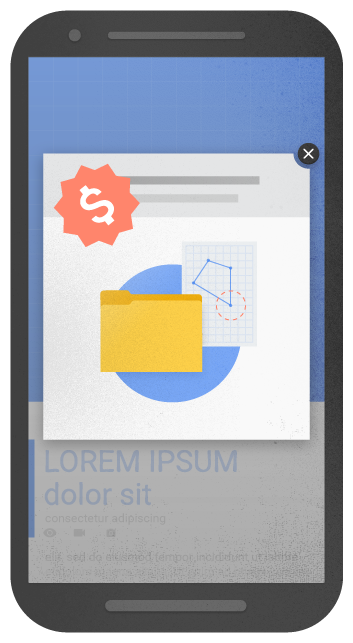
다음은 방해가 되는 독립형 전면 광고의 예입니다.
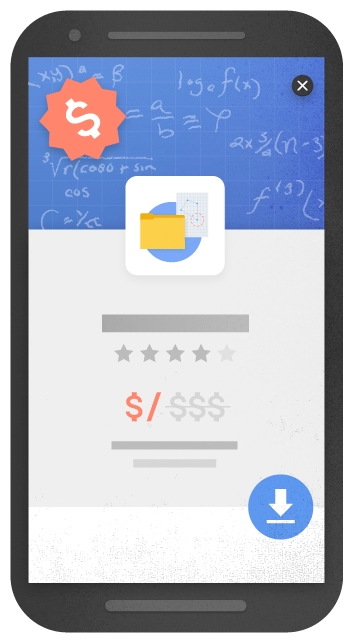
다음은 방해가 되는 독립형 전면 광고의 또 다른 예입니다.
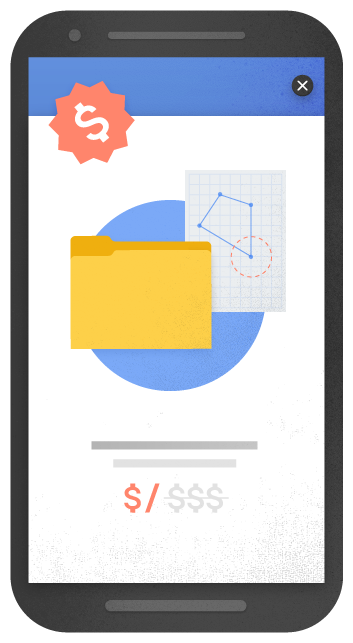
이와 달리 책임감 있게 사용할 경우 새 신호의 영향을 받지 않는 기법의 예는 다음과 같습니다.
- 쿠키 사용이나 연령 확인과 같은 법적 의무를 이행하기 위해 표시되는 전면 광고
- 콘텐츠의 색인을 공개적으로 생성할 수 없는 사이트의 로그인 대화상자. 예를 들어 이메일과 같은 비공개 콘텐츠나 페이월로 인해 색인을 생성할 수 없는 콘텐츠가 여기에 포함될 수 있습니다.
- 화면 공간을 적절하게 사용하고 쉽게 닫을 수 있는 배너. 예를 들어 Safari와 Chrome에서 제공하는 앱 설치 배너는 화면 공간을 적절하게 사용하는 배너의 예입니다.
책임감 있게 사용할 경우 새 신호의 영향을 받지 않는 전면 광고의 예
다음은 쿠키 사용을 위한 전면 광고의 예입니다.
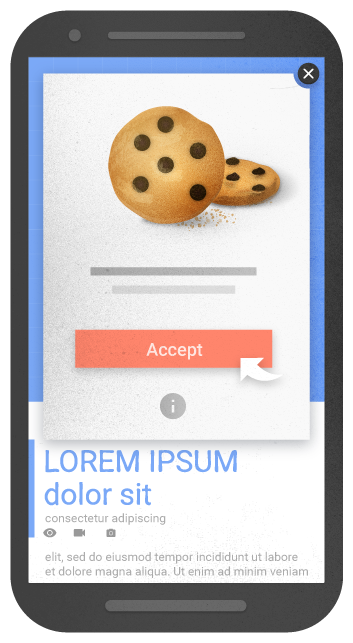
다음은 연령 확인을 위한 전면 광고의 예입니다.
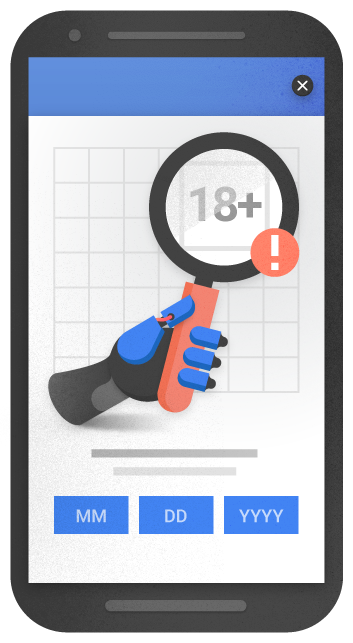
다음은 화면 공간을 적절하게 사용하는 배너의 예입니다.

이전에는 사용자에게 모바일 앱 설치를 요청하는 전면 광고를 확인하는 신호를 살펴봤지만 개발을 계속하면서 전면 광고에 맞춰진 초점을 더 전반적으로 확대할 필요성을 느꼈습니다. 이에 따라 신호 중복을 방지하고자 모바일 친화성 테스트에서 앱 설치에 대한 전면 광고 확인을 삭제하고 Google 검색의 새 신호에 통합했습니다.
새 신호는 순위 결정에 사용되는 수백 개의 신호 중 하나에 불과하며 여전히 검색어의 의도가 아주 강력한 신호이므로, 관련성이 높은 우수한 콘텐츠를 보유하면 페이지의 순위가 그대로 높게 유지될 수 있습니다. 궁금한 점이나 의견이 있는 경우 언제나처럼 웹마스터 포럼을 방문해 주세요.
